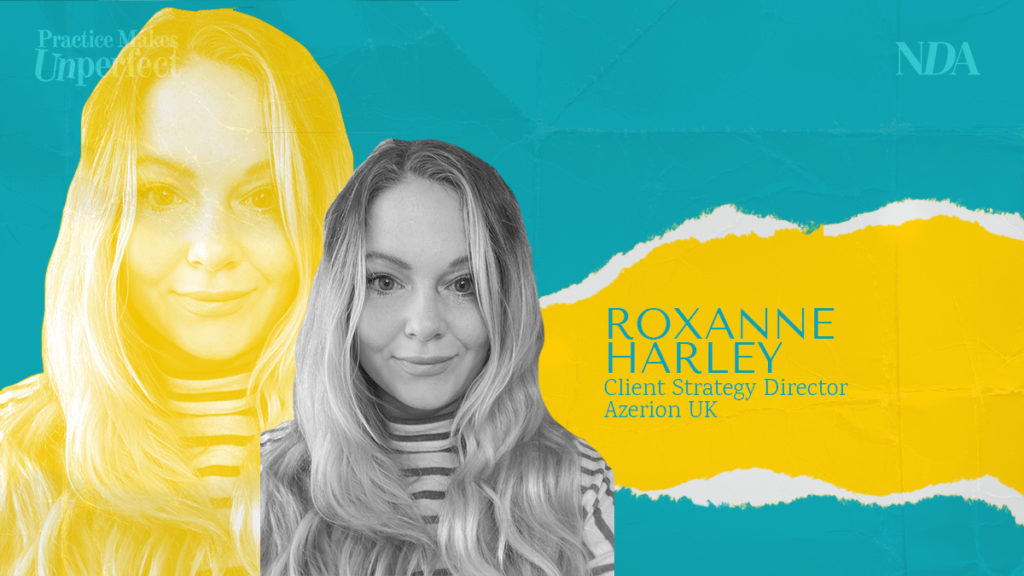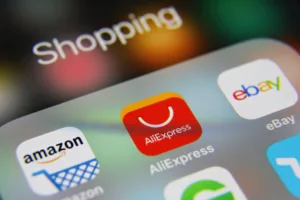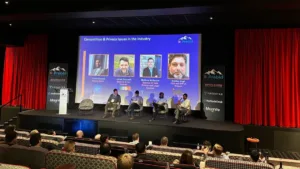By Roxanne Harley, Client Strategy Director, Azerion UK
These articles have been written by the latest cohort of the Practice Makes UnPerfect programme – a course that helps women find and finesse their public voices.
Whilst it’s said that both can be interesting, digital branding should keep your attention and build a relationship, whilst a one night stand is about instant gratification, and is destined to become a distant memory.
Digital advertising is powered by the laws of attraction. Can you stand out enough amongst the crowd? Group M’s 2021 mid-year forecast predicts digital ad revenue to grow by 27%. Digital will account for 77% of all UK advertising spend, so it’s even harder to catch the consumer’s eye.
Attention seems to be the current obsession in digital. Omnicom announced they’re looking to measure ads by attention, Dentsu has created their attention economy program and we’ve also seen media owners market themselves completely on the framework of selling via attention tracking.
The merits of attention is a hugely important conversation to be had in digital, and it’s a given that effectiveness is directly related to how much of an ad is viewable. However, just because an ad is being seen, doesn’t mean that it’s driving brand effectiveness or delivering on core business objectives.
Dentsu Aegis Network’s CMO Survey revealed that cost reduction, efficiency and reach are prioritised over strategic planning. Working with clients and agencies closely over the last 6 years in digital, it’s something that has also been evident for the majority of digital brand campaigns.
On the face of it, digital advertising can be seen to deliver above and beyond it’s guaranteed hygiene benchmarks, yet when looking at the brand effectiveness measurements – there are creative challenges and insights to learn from.
This was the case for a well-known motor client; metrics-wise the digital brand campaign read as a resounding success, yet when digging deeper and analysing the brand research, it was telling a different story. The campaign was actually having a detrimental effect on the brand. Essentially, putting people off buying the car. Just telling clients what they want to hear, and whispering sweet hygiene metrics in their ear won’t make you a trustworthy partner.
It’s these insights that then helped mould the next burst of digital branding, that enabled us to adapt the creative and to deliver a campaign that not only increased perceptions but also made an impact on lead generation and footfall to dealerships.
As an industry, we must challenge clients to think longer-term about their digital brand campaigns; set up research dips throughout, adapting creative changes based on insight and responding to feedback and learnings from humans vs solely deeming a digital campaign a success by numbers on a report based on viewability, clicks or how long someone looks at an ad for.
Digital branding should be like a marriage and based on compromise to ensure that both hygiene and efficiency metrics are being measured and tracked. It’s also important to keep that spark going, by adapting and learning. Here are three top digital brand strategy tips that I recommend to clients:
- Optimize Creative Assets With Insight
Kantar analysis shows that creative that elicits emotion generates more impact and is more likely to drive both short-term sales and long-term brand equity growth. Today with the average UK adult spending two days of their week online, it is more important than ever that brands stay close to the consumer and test brand content for that emotional reaction.
Let’s not forget that conext and targeting are important and should also be a key factor of assets and messages used in digital creatives. It’s not rocket science that if an ad is relevant to us, then it’s more likely to resonate. Using insight to inform creative is a really simple way to get budgets to work harder for clients.
- Sequential Storytelling
After analysing many effectiveness studies, it’s seldom that brands can drive awareness, increase perceptions and deliver huge uplifts in consideration and sales at the same time, with one campaign.
There’s no wham bam thank you mam on the first date here. It’s all about courting your audience and taking it slowly to reap the rewards. Brands need to be in digital branding for the long run, and build relationships through different creative messaging, formats and storytelling.
- Measurement Matters
Thanks to technology, we have access to a range of different measurement tools for digital brand campaigns. Yes, it’s important to know that an ad is viewable, it’s being clicked on, watched, etc but a brand is a clients most valuable asset. We have to ensure that we are including the right type of measurement based on core business objectives and the overall brand strategy.
It’s important here to mention that when setting up brand effectiveness studies, these aren’t generic studies where one size fits all. The real value is in learning about competitors, asking questions about specific creative diagnostics and brand perceptions, that will ultimately help shape the next brand message/tone of voice and story.
One night stands are fine, of course. (No judgement here!) Like any good stunt or one-off they can be exciting, memorable and engaging. But fail to keep in touch, and your consumers will be thoroughly disappointed. Their expectations of you will decrease rapidly. So definitely don’t expect them to pick up when you call again, 12 months later.









